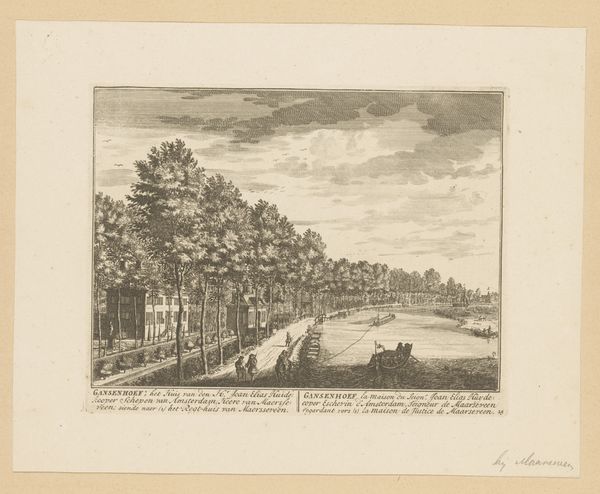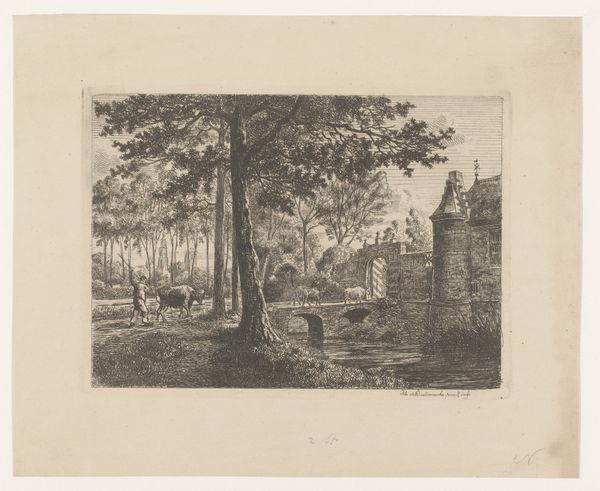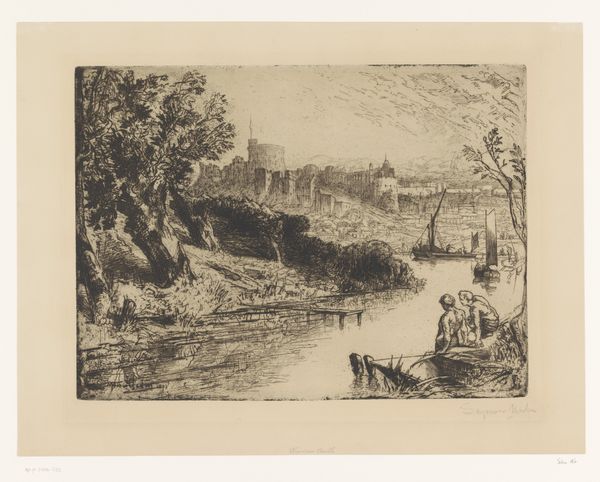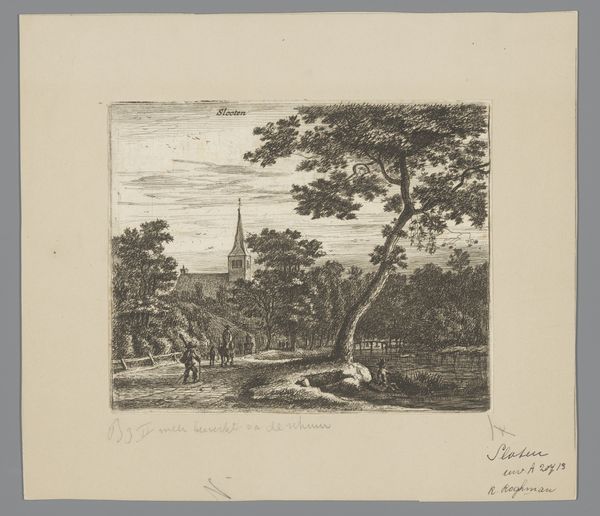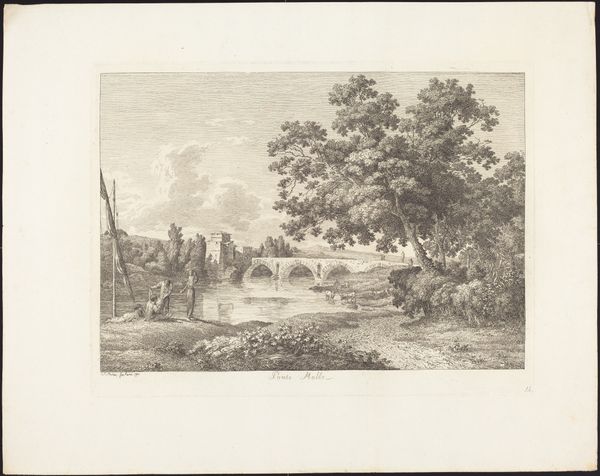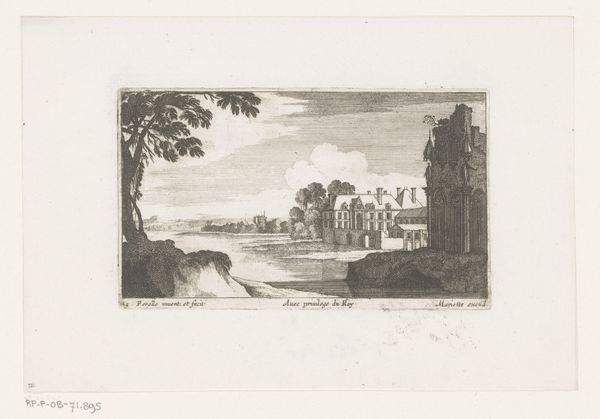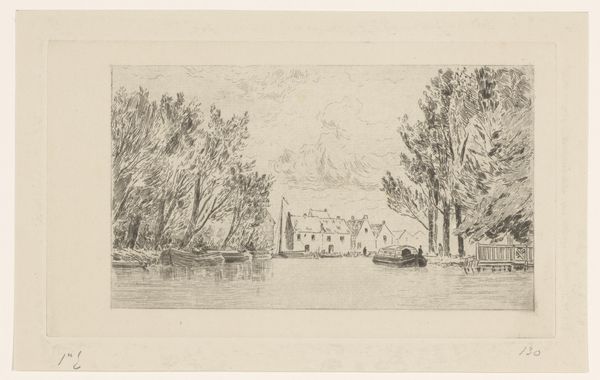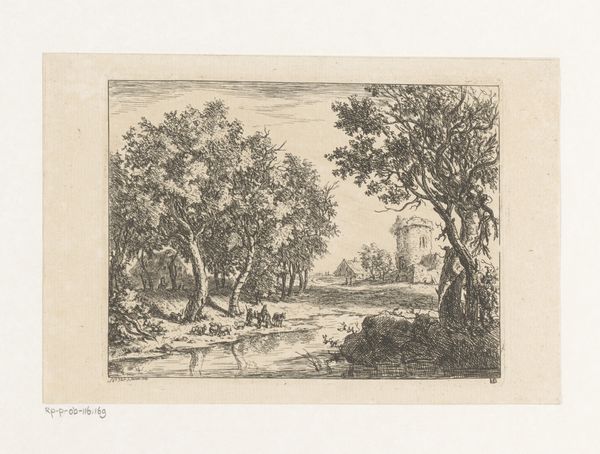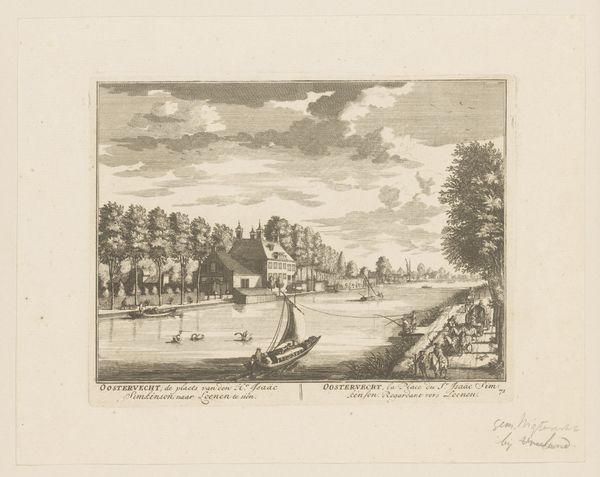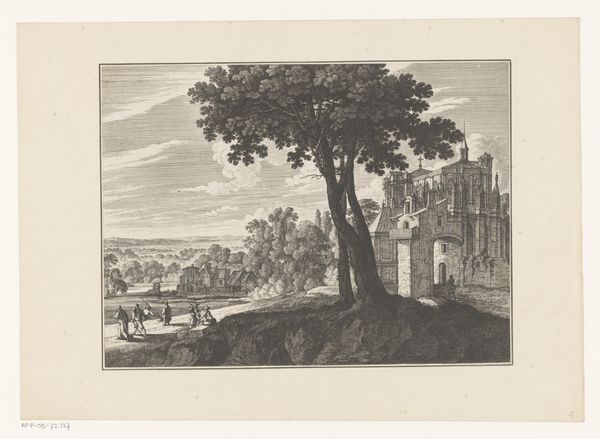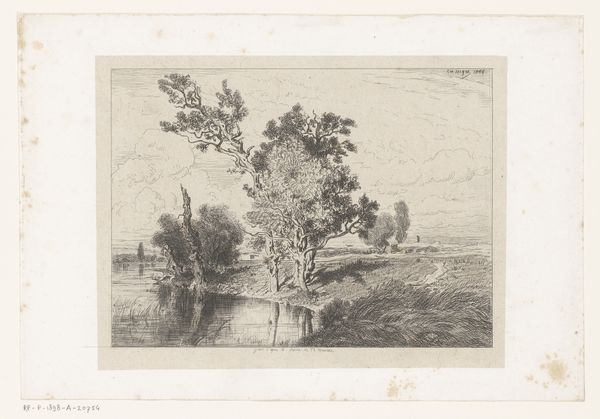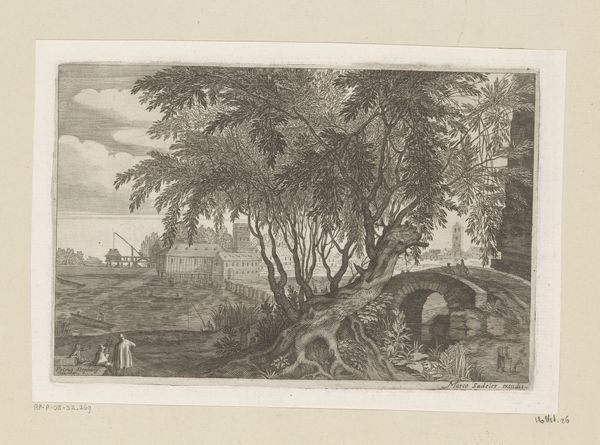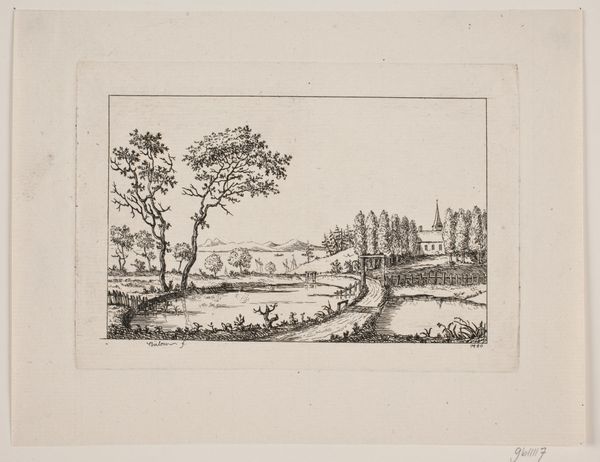
Struikelende man aan de rand van een bos met stad op de achtergrond 1857
0:00
0:00
Dimensions: height 123 mm, width 178 mm
Copyright: Rijks Museum: Open Domain
Edmond de Schampheleer made this etching, "Stumbling Man at the Edge of a Forest with City in the Background," sometime in the mid-19th century. It encapsulates the tensions between rural and urban life that defined Belgium at the time. The image captures a moment of disequilibrium. The stumbling man, caught between the dark, enclosing forest and the distant promise of the city, embodies the uncertainty of a society in transition. De Schampheleer made it during Belgium's rapid industrialization, as the country wrestled with modernization. One can imagine it reflects the anxieties of those leaving behind traditional ways of life for the uncertainties of the city. To understand this work, we need to look to sources beyond art history. Economic data, migration patterns, and social commentary of the time all enrich our understanding of this image. Art, after all, doesn't exist in a vacuum but is shaped by—and, in turn, shapes—the society around it.
Comments
No comments
Be the first to comment and join the conversation on the ultimate creative platform.
